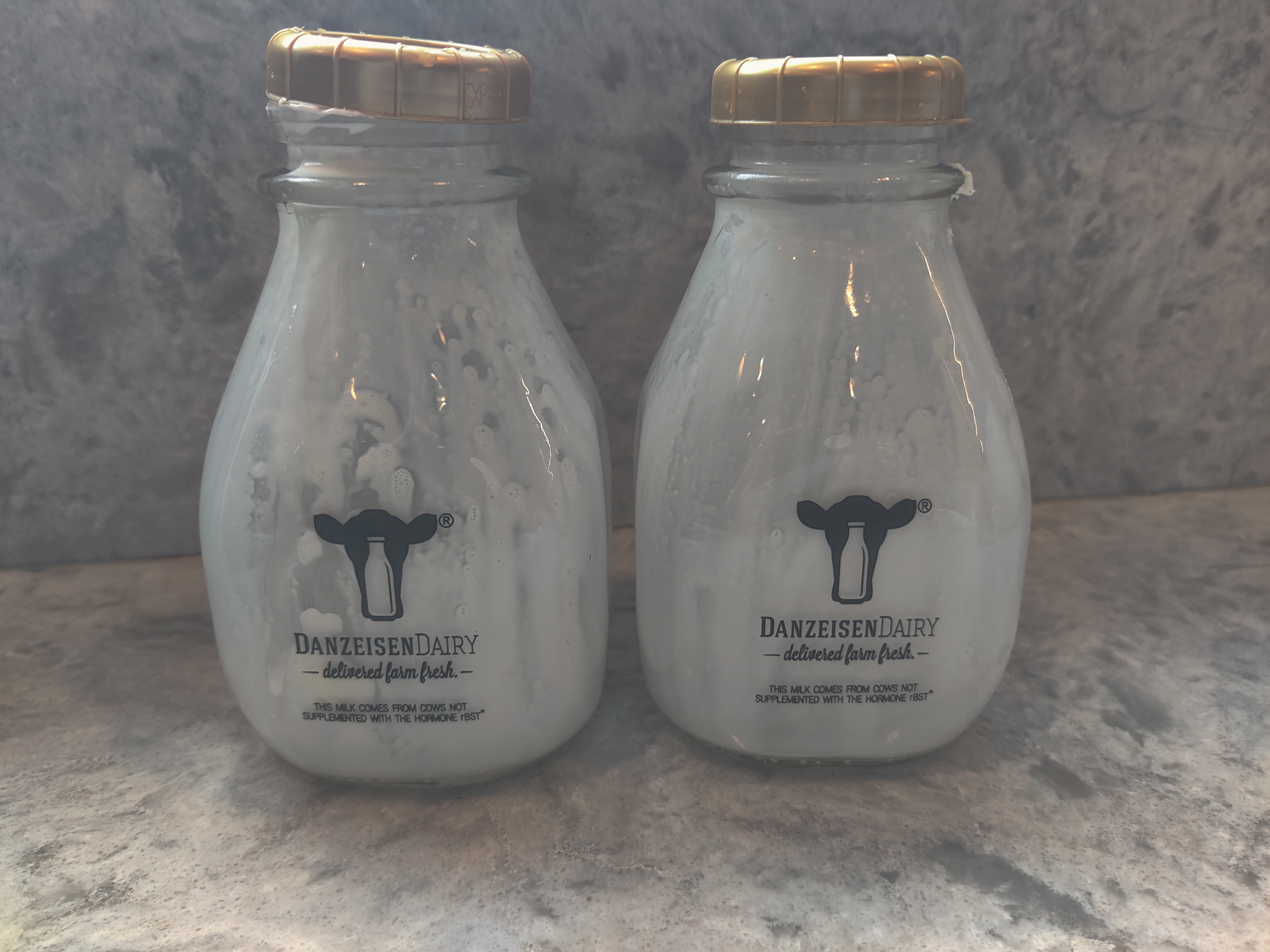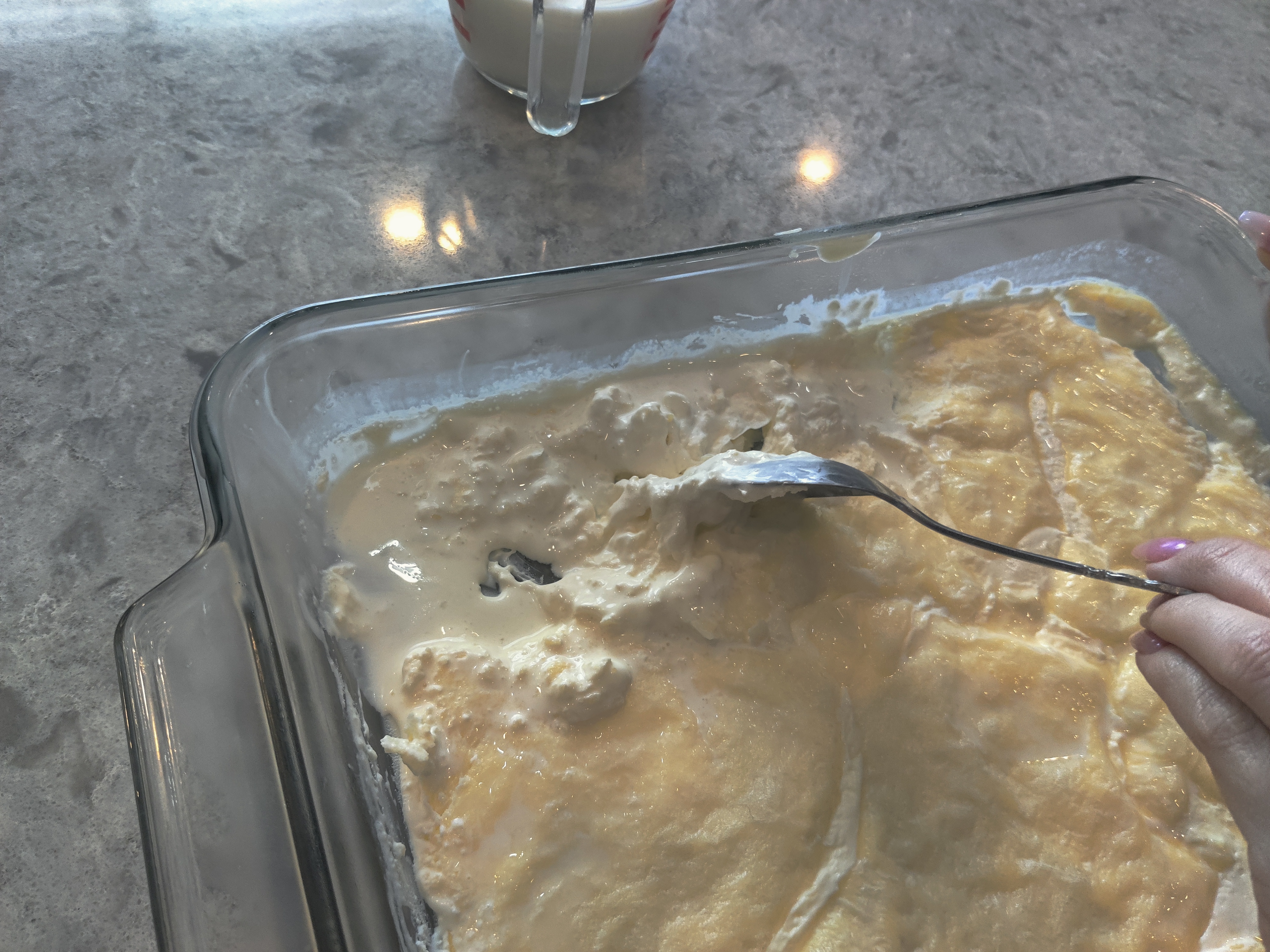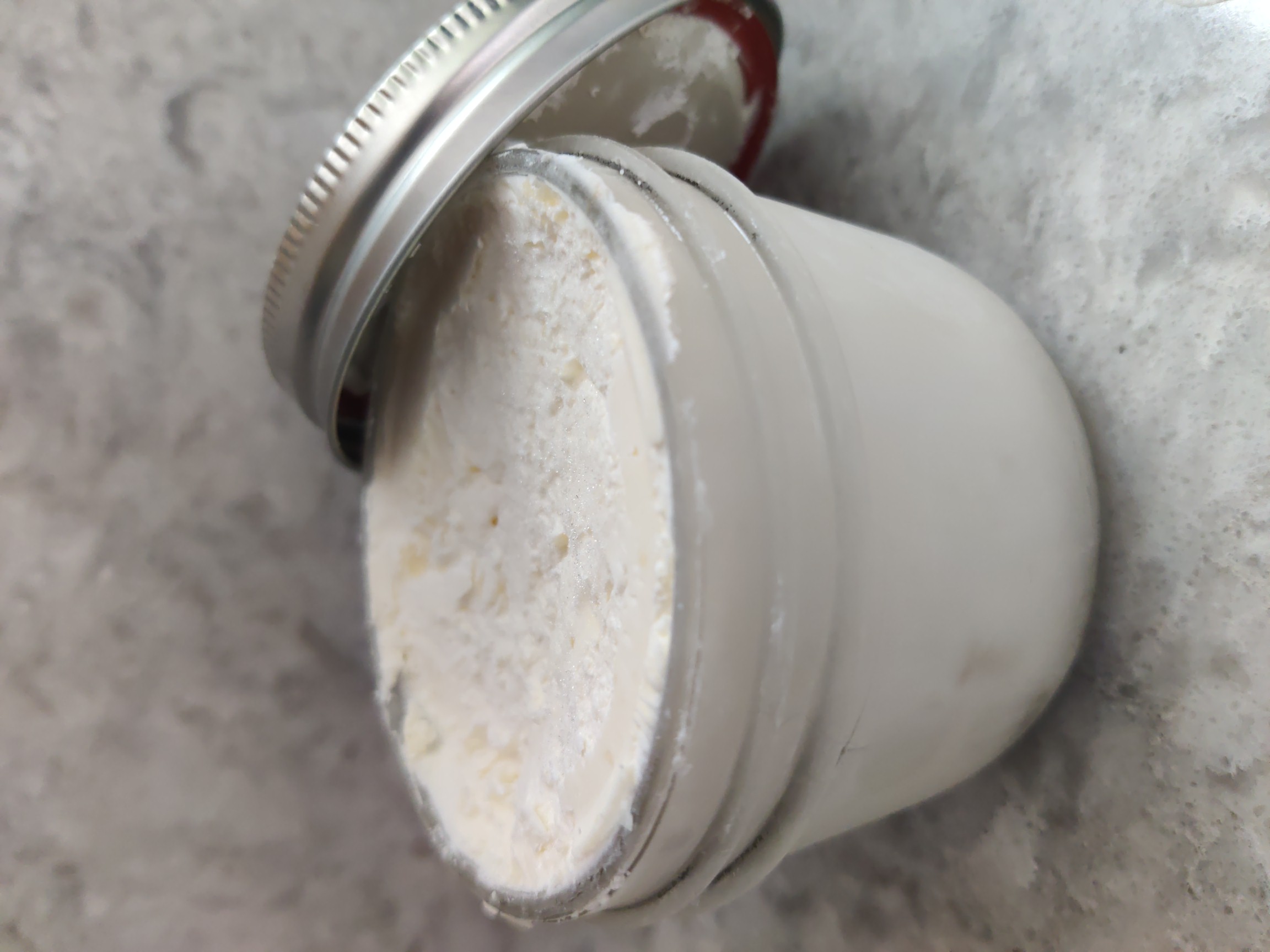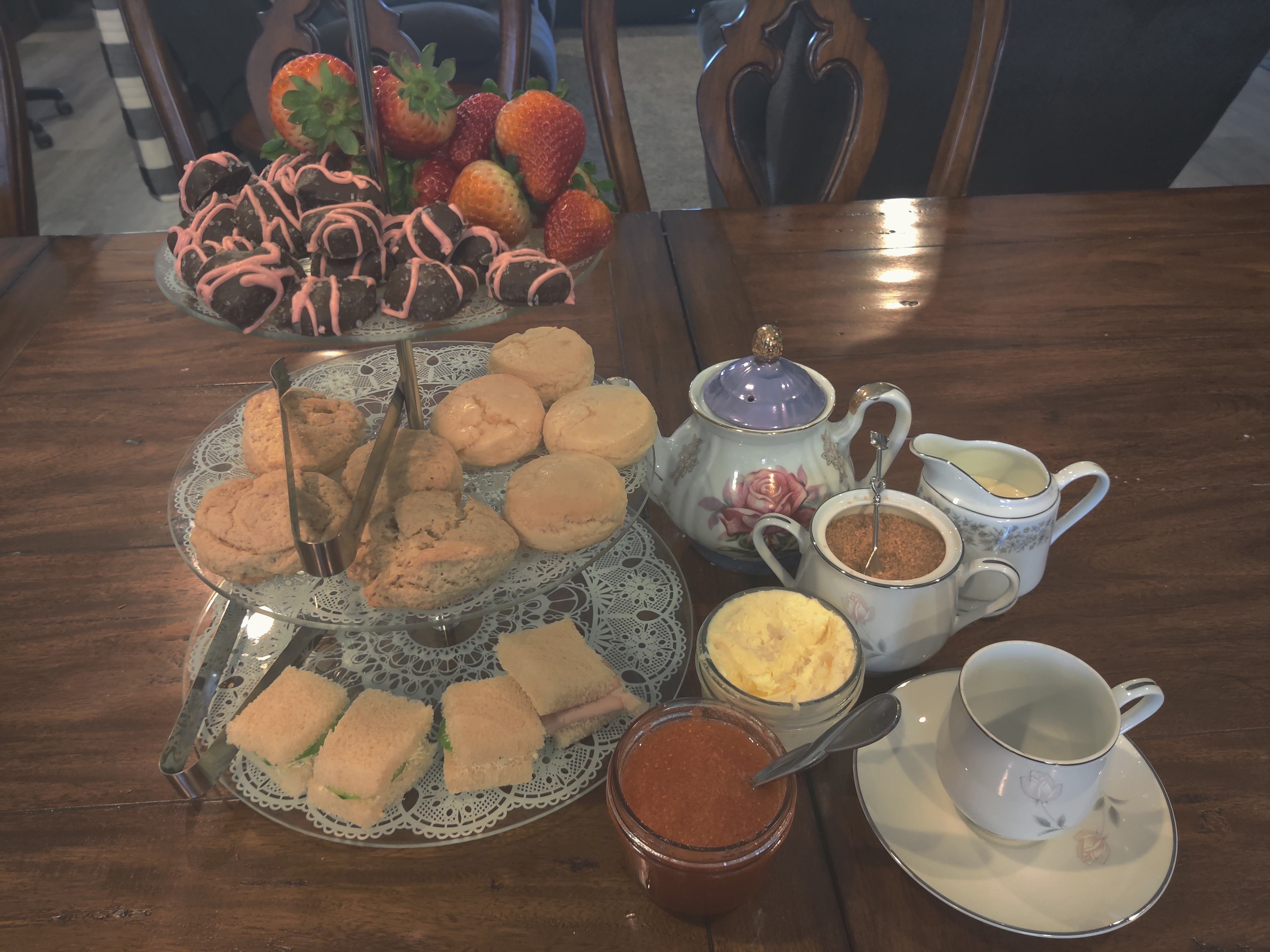Have you ever read a historical novel that mentions “clotted cream” or “Devonshire cream?” I admit, I skimmed over it the first few times without making special note of it except for a vague recognition of it being a weird British thing and that no self-respecting American would eat anything with the word “clotted” it in. Still, I gleaned that the British spread it on bread and scones. Later, I discovered that clotted cream is much like a mixture of butter and whipped cream and used in place of butter. Being the history geek that I am, I decided to taste a food that my book characters so often enjoy. Since the average American grocery store doesn’t carry clotted cream, the only way to serve it at my next tea party was to make it.
It’s a strange process. The cream bakes on low heat — overnight! Three things to note:
- Start the process at least three days before you want to eat your clotted cream.
- Use the highest quality and highest fat content cream you can find. You might have to go to a specialty store, as I did.
- Use within two weeks. It spoils as quickly as cream and does not have the longevity of (store-bought) butter.

I purchased cream from a shop that sells milk from a local dairy. It comes in pints. Do you hear a hobbit’s voice speaking that line? If not, you clearly aren’t a Lord of the Rings fan and I’m not sure we can still be friends. Kidding! (mostly)
As I poured my cream into a 11×14 glass casserole dish and placed it into the oven, I felt as if I should apologize to it for the torture it was about to endure over the next 12 hours.
Below and to the left is the cream after baking for 12 hours. It’s a weird mixture of a hard, dried crust with a slightly golden color swimming in a pool of thin liquid. Not very appetizing looking at this stage, is it?

Following directions, I poured out the thin liquid, which gave me about 8 ounces, and saved it to use it in place of milk for your favorite scone recipe, which I made a few days later. Since I had never made British scones, I don’t know what kind of difference it made, but I had the liquid anyway so followed those instructions.
Next, I stirred gently, which took several minutes working with such thick, sticky stuff.

Below is the transformation after stirring. It still had a few lumps but I was afraid to over-stir it in case it would turn back to liquid, as what happens to over-whipped whipping cream. Already, it looks much more appetizing. A quick finger lick assured me that it tasted better than butter. But was it worth all the work?

After stirring it as much as I dared, fearful of turning it into butter, I packed the hard-earned clotted cream into six 1 cup jars and refrigerated it until the tea party.

Once I made the scones, I spread the clotted cream onto one, mouth watering in anticipation. Now, the moment of truth:
The scone fell apart. No surprise there. I have low expectations for gluten-free box mixes of anything that should be made with regular flour.
However, the clotted cream delivered. It was creamy, rich, and very lightly sweet—indeed much tastier than butter.
I served it with scones, cucumber sandwiches, strawberry freezer jam, strawberries, and chocolate-dipped caramels. And tea, of course!
My guests, who were members of our book club, enjoyed the food and the company as we discussed The Queen by Andrew Morton. We had a delightful afternoon, and everyone agreed I was the biggest tea party geek of all. I think I need a badge for that. Or maybe a tiara.
My verdict: it’s worth the work, but only for special occasions.
So there you have it: authentic British clotted cream, the stuff of British-set historical novels. And tea parties.


We had it when in England on splits . The splits looked more like puffy muffins. As they were called scones by some, that has led to many years of confusion. Clotted cream is yummy.
Oooh! Splits is new to me. I will have to keep a look out for it. Thanks for stopping by and leaving a comment, Nancy!
I loved the article about clotted cream. I have been to Britain and Scotland several times and have enjoyed. “ Cream tea “, especially for breakfast on a warm scone with jam. And clotted cream. Oh it’s to die for. I thank my British relatives for introducing me to it. My husband even made some for me for Mother’s Day one year. I can’t wait to sit family again.
How lovely! Thanks for stopping by and leaving a comment!
I think making clotted cream is a special occasion!
You’re right! But, to spread the joy, it should be shared with friends.